How You Can Structure Content Refreshes for Maximum Search Impact
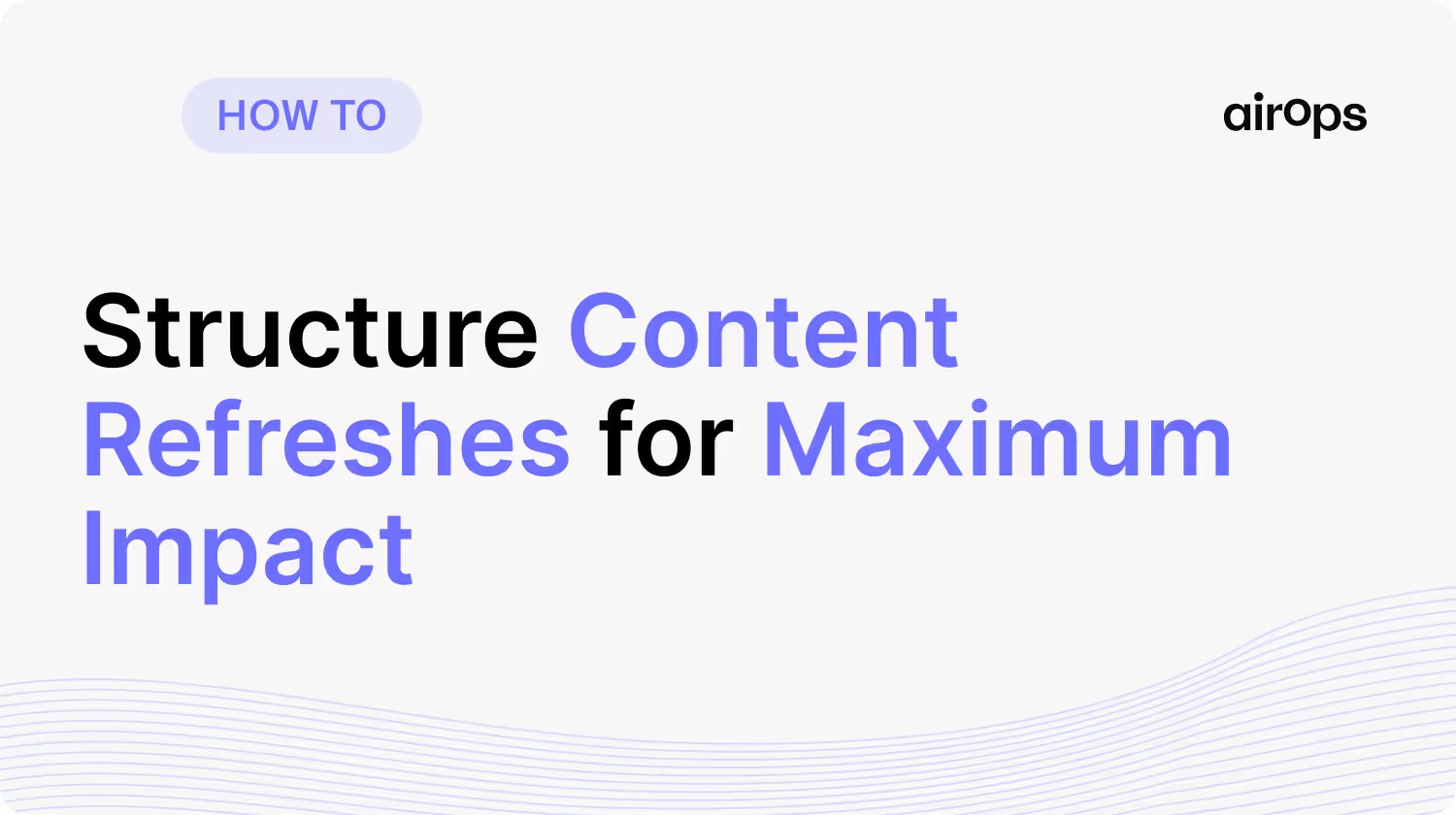
- Regular content refreshes deliver higher ROI than manual updates without clear priorities or workflows.
- Prioritize pages with 20%+ traffic decline or positions 11-20 for maximum impact potential.
- Structure content with clear hierarchies and schema markup to maximize AI visibility and citations.
- Automated monitoring systems identify underperforming content before significant visibility loss occurs.
Content refreshes are your most powerful lever for improving search rankings and AI visibility. Teams waste countless hours manually updating pages without a systematic approach or clear priorities. Without structured refresh workflows, your content decays while competitors capture valuable search traffic and citations.
This article shows you how to build scalable content refresh systems for maximum impact. You'll learn to identify high-priority pages, optimize for AI search engines, and measure business results.
How Do I Structure Updated Content for Better AI Visibility?
Structuring content for AI visibility requires optimizing both format and technical elements for machine readability.
Create clear sections with descriptive headings, concise answer blocks, and semantic HTML markup.
LLMs need easily extractable information structured in question-answer pairs and bulleted lists.
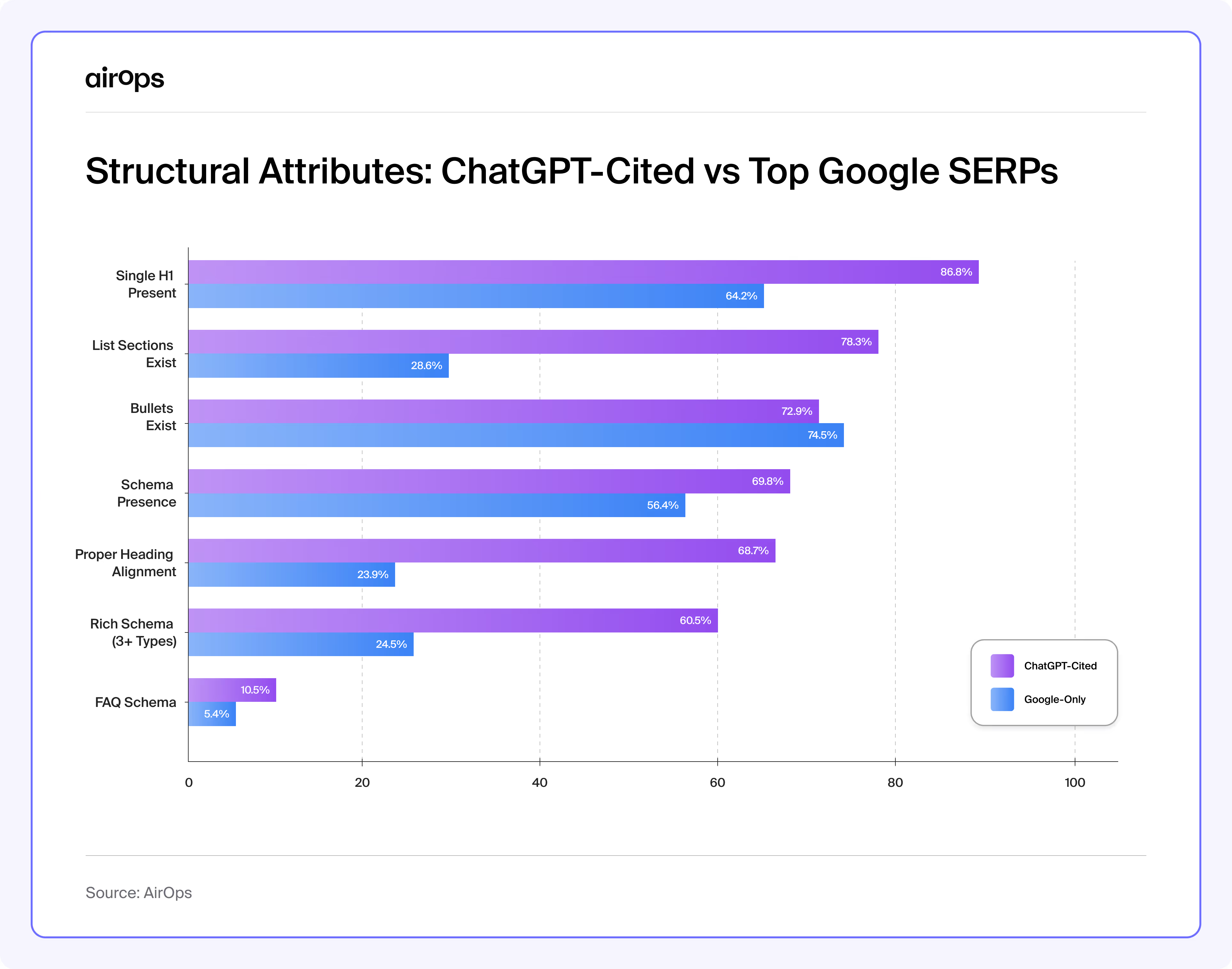
Essential elements for AI-optimized content structure include:
- Clear heading hierarchies (H1→H2→H3) that help AI systems understand topic relationships and content organization.
- Concise answer blocks at section beginnings that directly address the user's query in 2-3 sentences.
- Schema markup implementation that signals content type, authorship, and topical relevance to AI crawlers.
According to Google Search Central, Google uses structured data to understand page content and can make pages eligible for richer results in search.
According to AirOps research, pages with rich schema are 13% more likely to earn AI citations, making technical optimization essential for visibility.
Focus on self-contained sections where each part answers specific questions completely. This chunked approach helps AI systems extract relevant passages for citations and featured snippets.
How Do I Identify Informational Pages That Need Rewriting?
Identifying pages that need rewriting starts with analyzing traffic drops, ranking declines, and engagement metrics.
Focus on pages showing consistent traffic decreases over 3-6 months or losing featured snippets.
Content older than 12 months typically needs evaluation for freshness and relevance updates.
Key indicators for content refresh priorities:
• Traffic decline of 20% or more over the past quarter signals content decay or competitive displacement.
• Pages ranking on page 2 (positions 11-20) represent quick-win opportunities for visibility improvements.
• High-impression, low-CTR pages indicate title and meta description misalignment with search intent.
According to SISTRIX, the first organic result captures an average 28.5% CTR, while position 10 averages 2.5%. That highlights the outsized gains from moving page‑two rankings into the top results.
Monitor these metrics monthly to catch performance issues before significant visibility loss occurs. Build automated dashboards that flag underperforming content based on your specific thresholds and business goals.
Research shows that pages not updated in over a year are more than 2X as likely to lose citations and market share to competitors, making timely identification critical.
Content Refresh Strategies That Drive Measurable Results
Successful content refreshes require systematic approaches that balance quick wins with long-term improvements. Start with pages closest to valuable rankings, then expand to broader portfolio optimization.
- Target Position 2-10 Pages First: Focus initial efforts on pages nearly ranking for high-value terms that need minor improvements.
- Update Data and Statistics: Replace outdated figures with current research, ensuring all statistics reflect the latest available information.
- Enhance Topic Coverage: Add missing subtopics identified through competitor analysis and related search queries.
- Optimize for Featured Snippets: Structure content with clear definitions, numbered steps, and comparison tables for snippet opportunities.
- Improve Internal Linking: Connect refreshed pages to newer, relevant content for improved topical authority signals.
Each refresh should address both user experience and technical optimization simultaneously. This dual approach ensures improvements benefit both human readers and search algorithms equally.
For instance, Lightspeed had increased conversions from content by 37% by using AirOps to further optimize their pages for technical SEO and AI search.
A comprehensive content refresh strategy combines these tactical improvements with systematic prioritization for maximum impact.
Takeaways
These key insights will transform your content refresh approach from reactive maintenance to strategic optimization.
- Prioritize pages showing 20%+ traffic decline or ranking in positions 11-20 for maximum impact potential.
- Structure content with clear hierarchies, concise answer blocks, and schema markup for AI readability.
- Build automated monitoring systems that flag underperforming content based on traffic and engagement thresholds.
- Focus refresh efforts on pages closest to valuable rankings before tackling broader portfolio updates.
- Combine user experience improvements with technical optimization for sustained performance gains.
Content refreshes deliver the highest ROI when executed through systematic, scalable workflows. Start with clear prioritization criteria, then build repeatable processes that maintain content quality while maximizing visibility.
According to AirOps research, pages updated within the last 12 months made up more than 95% of citations across leading brands, highlighting the importance of maintaining content freshness.
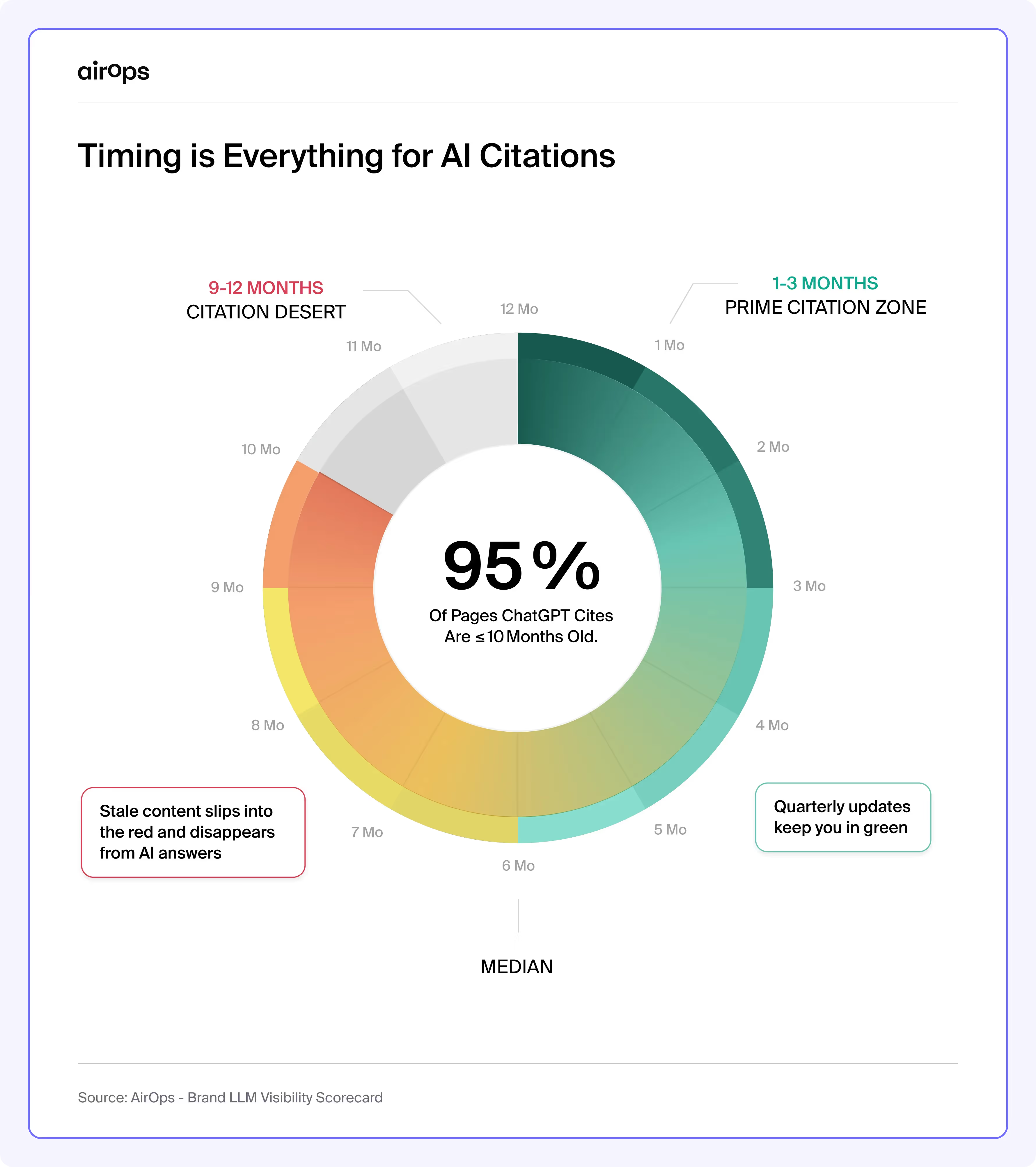
Scale Your Content Refresh Strategy with AirOps
Manual content refreshes drain resources while your competitors capture valuable search visibility and AI citations. Without automated systems, teams struggle to identify priorities and execute updates efficiently. AirOps transforms content refreshes from reactive maintenance to strategic optimization through intelligent workflows.
- AirOps Content Refresh workflows automatically identify and update underperforming pages for maximum impact.
- Monitor both traditional SERP rankings and AI visibility metrics in one unified platform.
- Schedule recurring refreshes to maintain content freshness without manual oversight.
- Stay on-brand at scale with Brand Kits and expert-in-the-loop editing capabilities.
Stop watching your content decay while competitors dominate search results. Book a call to discover how AirOps helps you achieve results through regular content refreshes.
Win AI Search.
Increase brand visibility across AI search and Google with the only platform taking you from insights to action.
Get the latest on AI content & marketing
Get the latest in growth and AI workflows delivered to your inbox each week



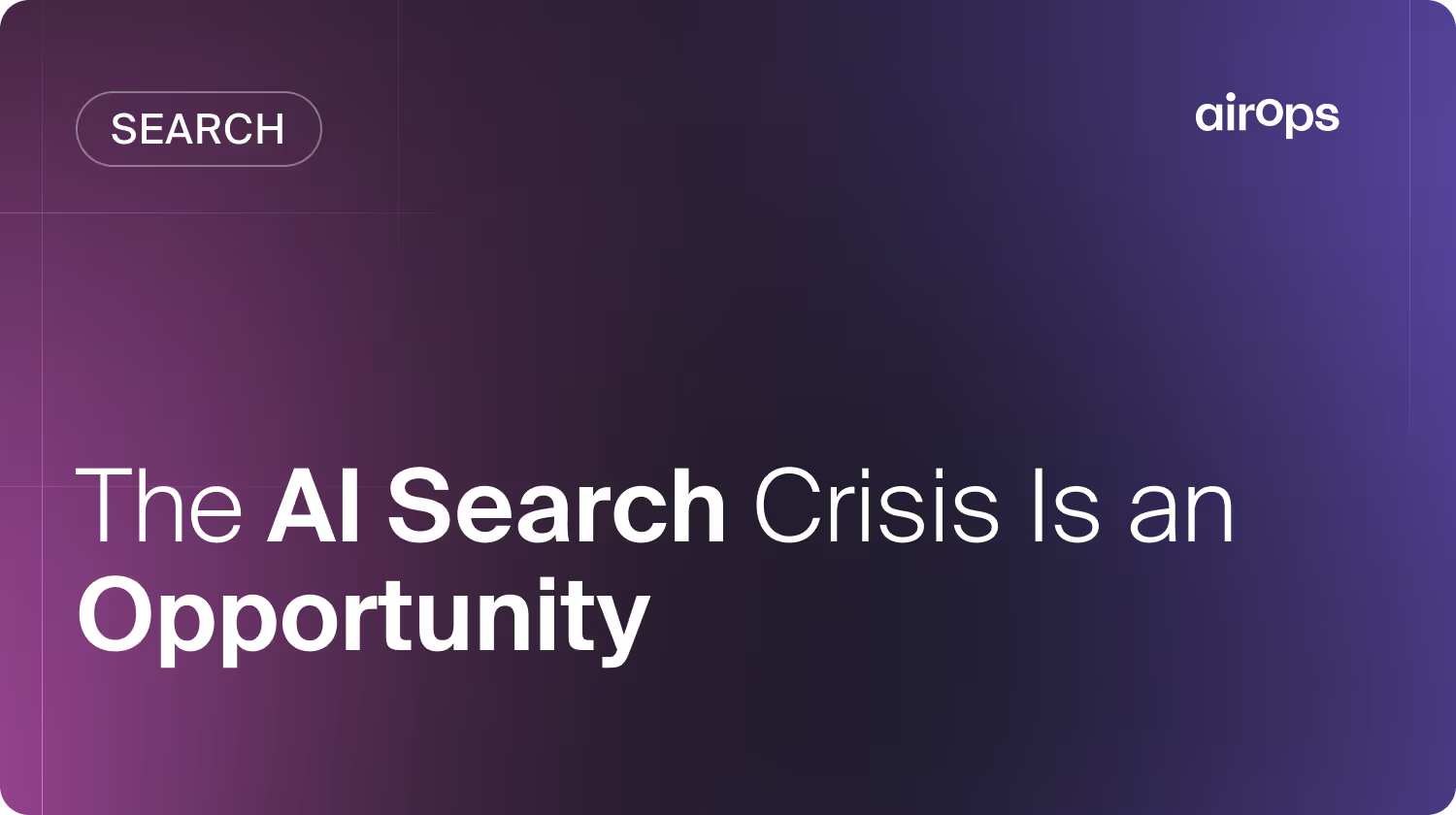

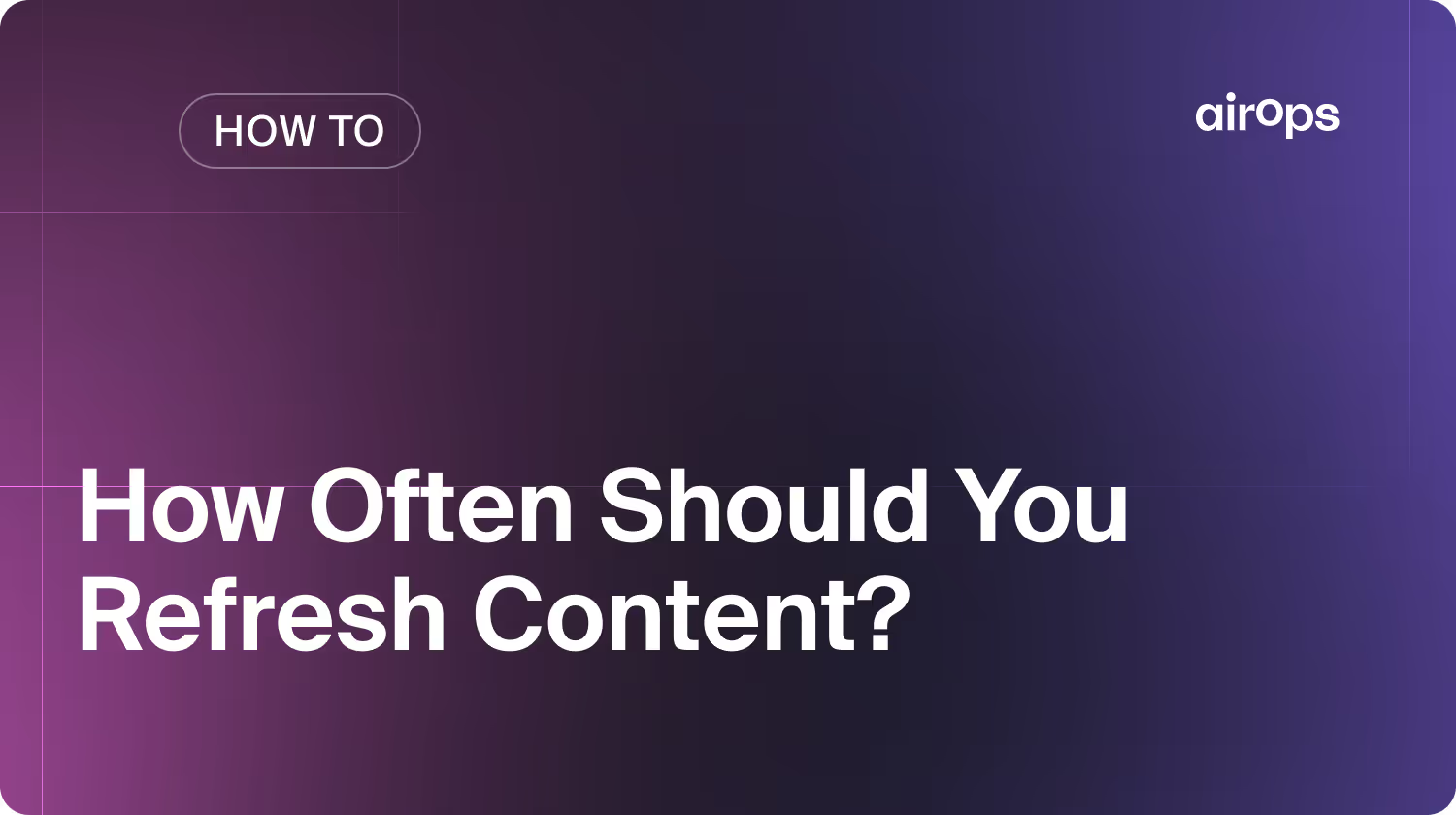
.avif)